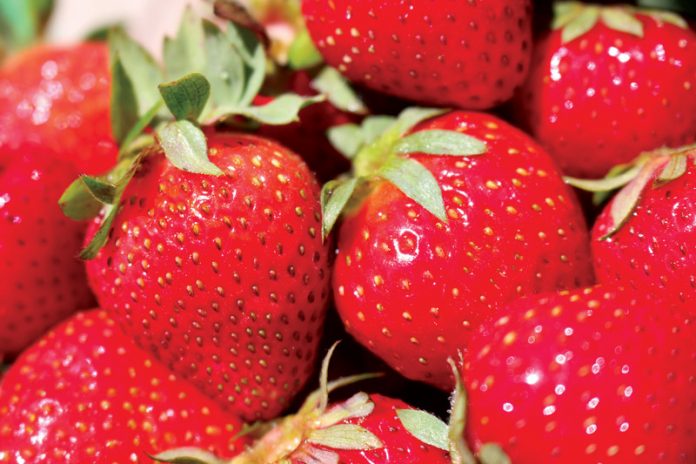
Strawberry season in the Pajaro Valley is in full swing, and experts are reporting that demand has steadily increased despite a difficult kickoff.
As the Covid-19 pandemic hit the California region in mid-March, strawberry producers initially saw a spike in sales. But it was soon followed by an alarming drop in production as the food supply chain began to break down.
“We were backlogged,” said Soren Bjorn, President of Driscoll’s of the Americas. “We sat on extra berries for days. At one point in April… we [lost] about 15 trucks to processing. That was devastating.”
Bjorn said it was likely due to the fact that berries are highly perishable, and during the first month or so of the shelter-in-place order, consumers were more inclined to buy longer-lasting foods. In addition, lucrative places that once sourced Driscoll’s berries—theme parks, airlines, cruise ships—could no longer operate.
Carolyn O’Donnell, Communications Director for the California Strawberry Commission, said that about 15 to 20% of California’s strawberries are purchased by foodservice industries, which also took a hit during shelter-in-place.
“It was a pretty hectic first couple of months,” O’Donnell said. “There was a significant drop. Schools and restaurants were closed. For some growers… especially smaller [growers], losing that was a major hit.”
Bjorn said that Driscoll’s found themselves having to make up for the losses through grocery stores and online sales.
“We are still having a hard time with that recovery,” he said.
However, O’Donnell said that things are leveling out, and demand is once again high. This has been helped out by the fact that the crops themselves are doing well—especially for current crops in the Pajaro Valley.
“The fruit has been great,” O’Donnell said. “We are right in the zone for production.”
Added Bjorn: “There have been no major [weather] interruptions like last year’s late rain storms. The strawberries [in the Pajaro Valley] are healthy… we’re having ideal weather, with cool mornings and sunny afternoons.”
Looking ahead, Bjorn said that labor is one factor that will be challenging in the coming months. While many have joined the agriculture industry in light of losing other jobs, workers’ situations remain uncertain.
“Our biggest challenge right now is the future of schools,” Bjorn said. “If distance learning is going to be a full school year… that will be a big burden for our working parents.”
Safety is also a concern, said O’Donnell, who listed the ways in which the Strawberry Commission has been reaching out to growers with information on how to stop the spread of Covid-19.
“Things are changing all the time,” she said. “There is new information to report every day. We are trying to find ways to train our growers and our crews for these issues.”
For information visit calstrawberry.com/en-us.










